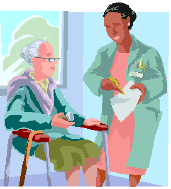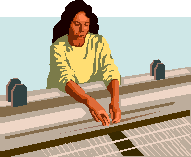

 |
Many changes have occurred
in the workplace over the last twenty years. One of the most
significant changes is the increase in the number of women that have
joined the workforce.
Women are now working in all areas of the workforce with the biggest area of growth occurring in the number of part-time jobs. In 1965, approximately 6.5% of women were working part-time and today approximately 18% are working part-time. The rate of women in full-time work has only increased by about 3% since 1965. (Source: Statistics New Zealand). |
There are many reasons for women to be working in part-time jobs rather than full-time jobs. They may have children to care for, may be studying part-time or they may be heading towards retirement.
 Balancing
work and family has become important to working life and people have found that
family responsibilities, such as caring for elderly relatives, can mean changes
need to be made to their work patterns.
Balancing
work and family has become important to working life and people have found that
family responsibilities, such as caring for elderly relatives, can mean changes
need to be made to their work patterns.
It is possible for more women to return to the workforce through changes to child care systems and a greater choice in job situations. Job sharing, flexible working hours and extended shifts are all ways in which women can work part-time to suit their needs.

Both employers and employees benefit from introducing 'family friendly' choices in the workplace. Workers with families have valuable skills and experience that employers cannot afford to lose. In addition, employees have an increased sense of job satisfaction as they are meeting both family and work commitments as well as receiving an extra income.
There has been much change in the numbers of Maori in the workforce over the last 15 years. In addition, the types of work that Maori traditionally carry out has changed to include a broader range of occupations.
 In
the late 1980s, New Zealand suffered an economic down turn which led to a
decrease in the proportion of Maori men in employment. Employment dropped 21.9%
between 1986 and 1991, from 72.5% to 50.6%. The employment rate for
non-Maori men decreased by 8.7%.
In
the late 1980s, New Zealand suffered an economic down turn which led to a
decrease in the proportion of Maori men in employment. Employment dropped 21.9%
between 1986 and 1991, from 72.5% to 50.6%. The employment rate for
non-Maori men decreased by 8.7%.
Industries such as the manufacturing industry, which employed a high proportion of Maori men, became smaller and many of the Maori became unemployed as jobs were lost and no new jobs were created.
At the same time, the number of Maori women employed for an hour or more per week, also decreased from 45.0% to 35.3%. For non-Maori women the rate of employment dropped by 1.7%. (Source: Statistics New Zealand).
New Zealand's economic position began to improve in the early 1990s. The numbers of Maori men and women in the workforce increased significantly. Due to the growing demand for part-time work, the number of Maori women in the workforce increased from 35.3% to 47% between 1991 and 1996. This reflects not only an improved economic climate, but also a general increase in labour force participation among women, and a growing demand for part-time labour. Maori men also experienced a marked increase in employment over this period, moving from 50.6% to 61.4%.
Back to Work Issues and Safety Index